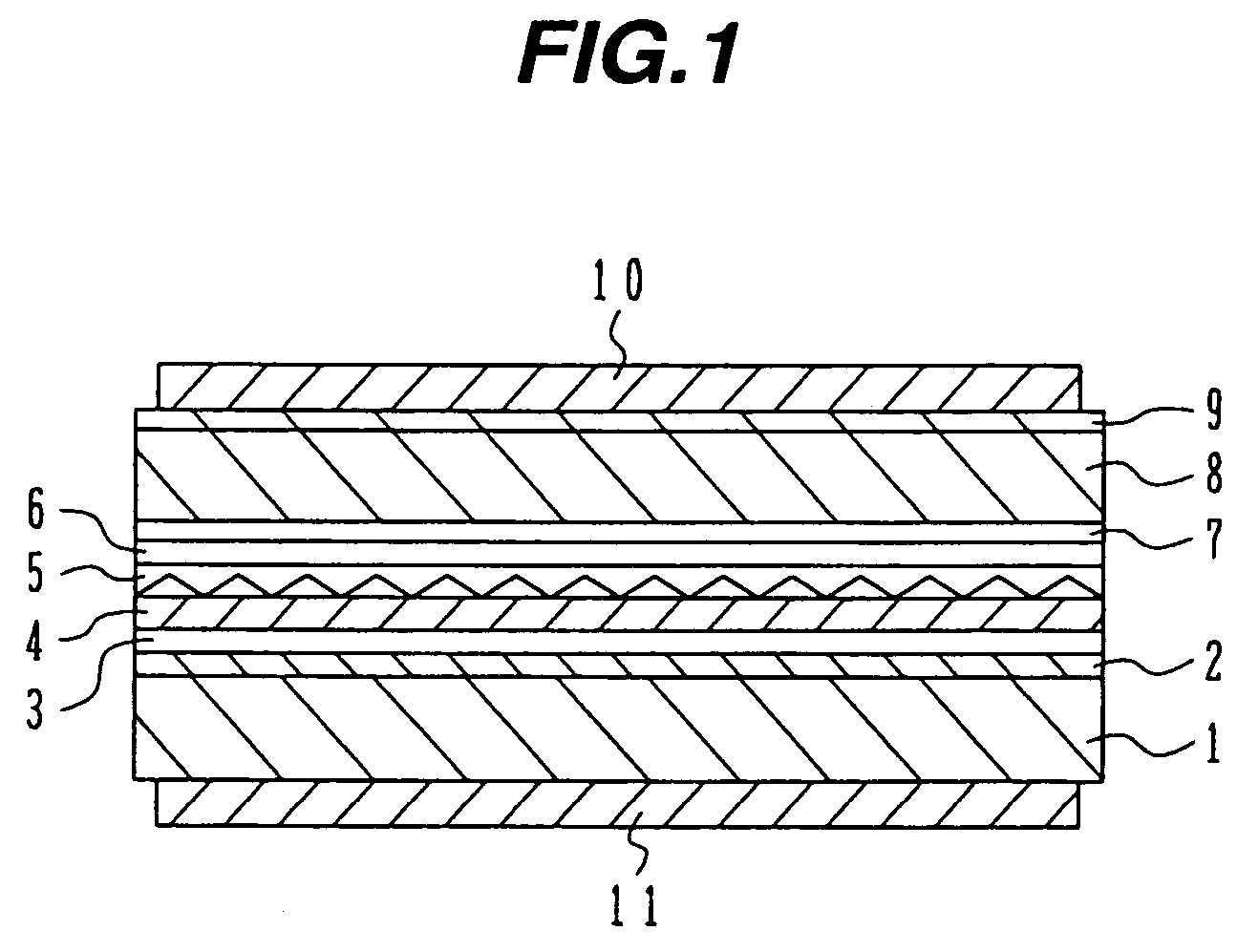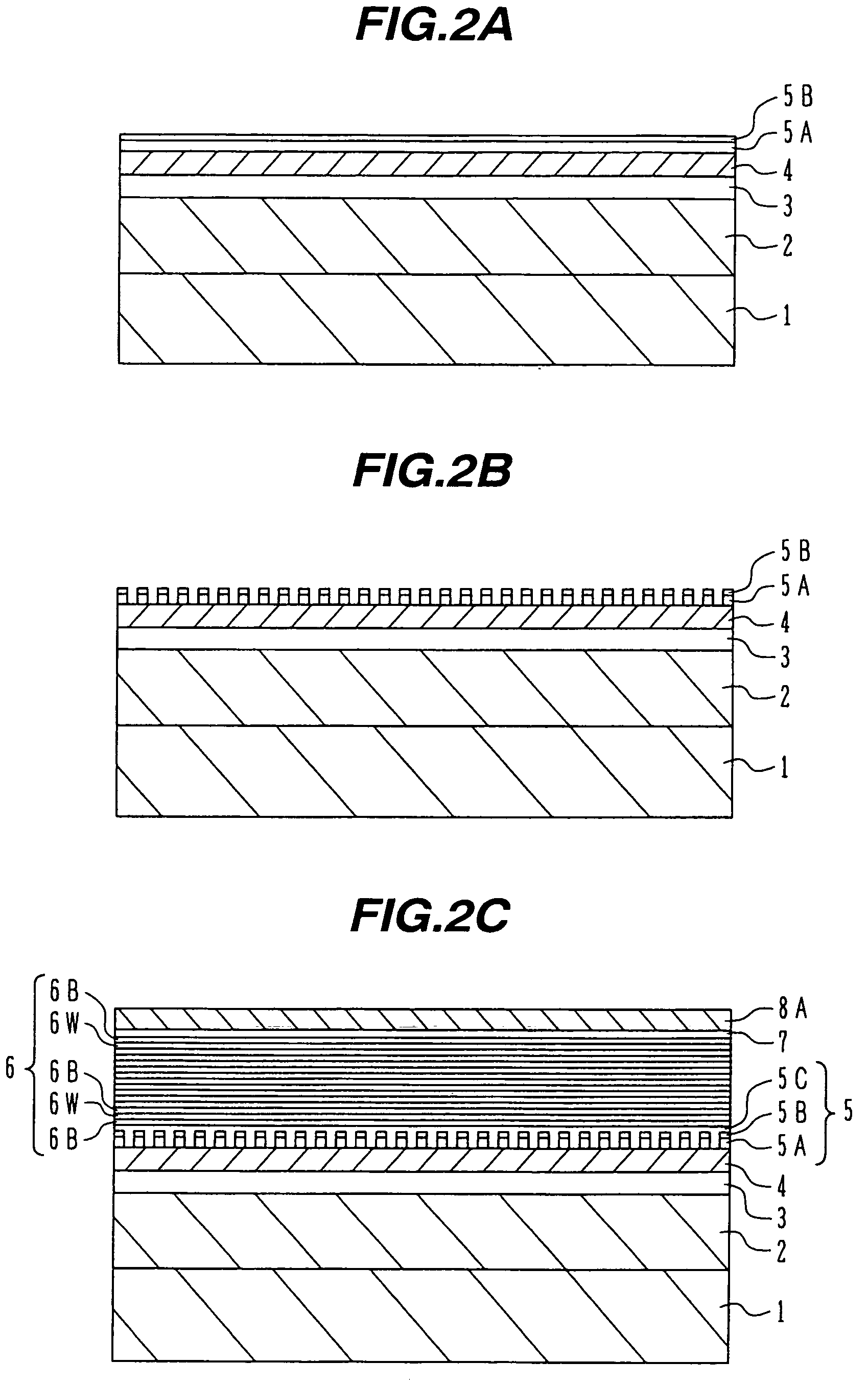Distributed feedback semiconductor laser
a semiconductor laser and distributed feedback technology, applied in the field of semiconductor lasers, can solve the problems of synergistic rise of oscillator threshold values, and achieve the effect of large coupling coefficient and increased light and diffraction grating coupling coefficien
- Summary
- Abstract
- Description
- Claims
- Application Information
AI Technical Summary
Benefits of technology
Problems solved by technology
Method used
Image
Examples
Embodiment Construction
[0024]FIG. 1 is a cross sectional view of a TTG-DFB laser along a direction (light propagation direction) parallel to the longitudinal direction of an optical resonator, according to an embodiment of the invention. On a substrate 1 made of p-type InP, a buffer layer of p-type InP having a thickness of 1 μm is formed. A tuning layer 3, an intermediate layer 4, a diffraction grating layer 5 and a multiple quantum well active layer 6 are sequentially stacked in this order on the buffer layer 2. The substrate 1 and the buffer layer 2 serve as a clad layer.
[0025]The tuning layer 3 is made of undoped Ga0.283In0.717As0.611P0.389 and has a thickness of 0.28 μm. The intermediate layer 4 is made of n-type InP and has a thickness of 0.11 μm. The diffraction grating layer 5 has a structure such that a diffraction grating made of n-type Ga0.217In0.783As0.472P0.528 is buried in the n-type JnP layer. The detailed structures of this layer will be later described.
[0026]The multiple quantum well acti...
PUM
 Login to View More
Login to View More Abstract
Description
Claims
Application Information
 Login to View More
Login to View More - R&D
- Intellectual Property
- Life Sciences
- Materials
- Tech Scout
- Unparalleled Data Quality
- Higher Quality Content
- 60% Fewer Hallucinations
Browse by: Latest US Patents, China's latest patents, Technical Efficacy Thesaurus, Application Domain, Technology Topic, Popular Technical Reports.
© 2025 PatSnap. All rights reserved.Legal|Privacy policy|Modern Slavery Act Transparency Statement|Sitemap|About US| Contact US: help@patsnap.com



